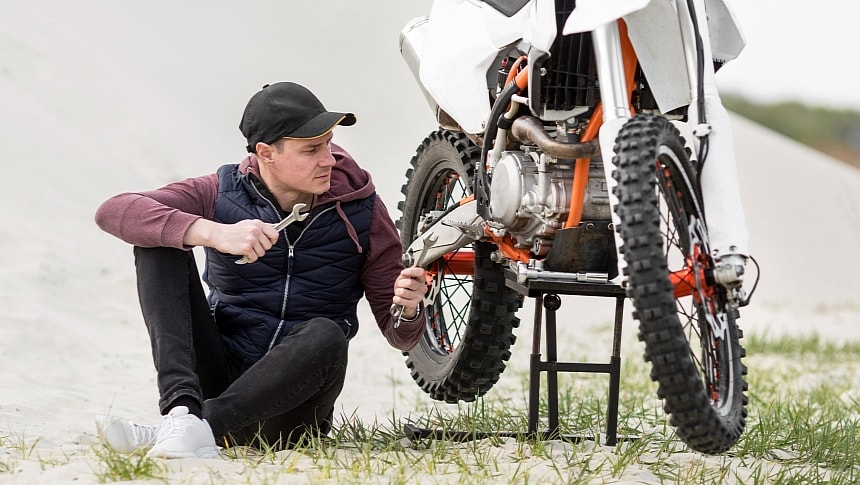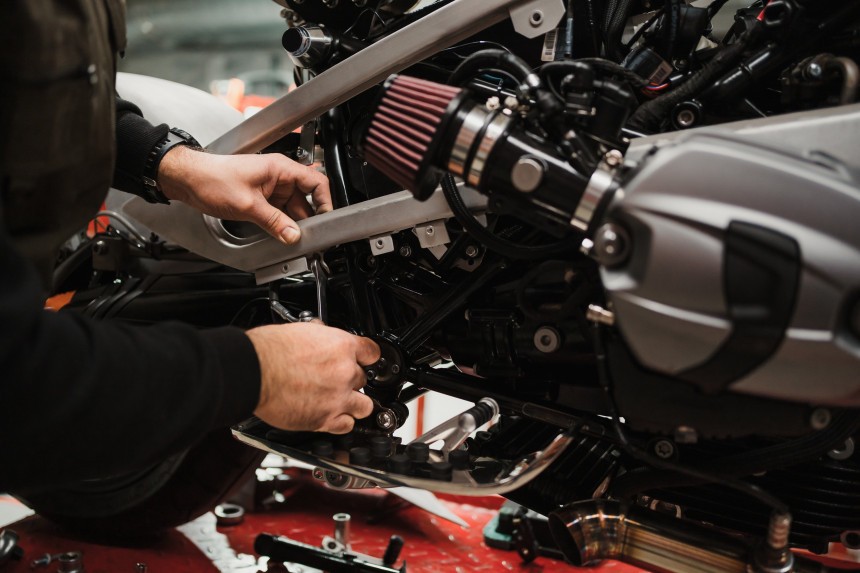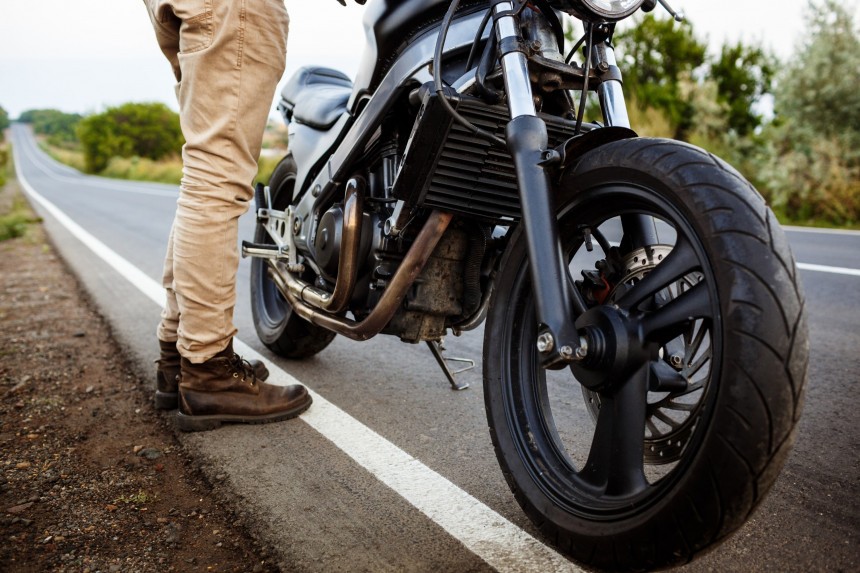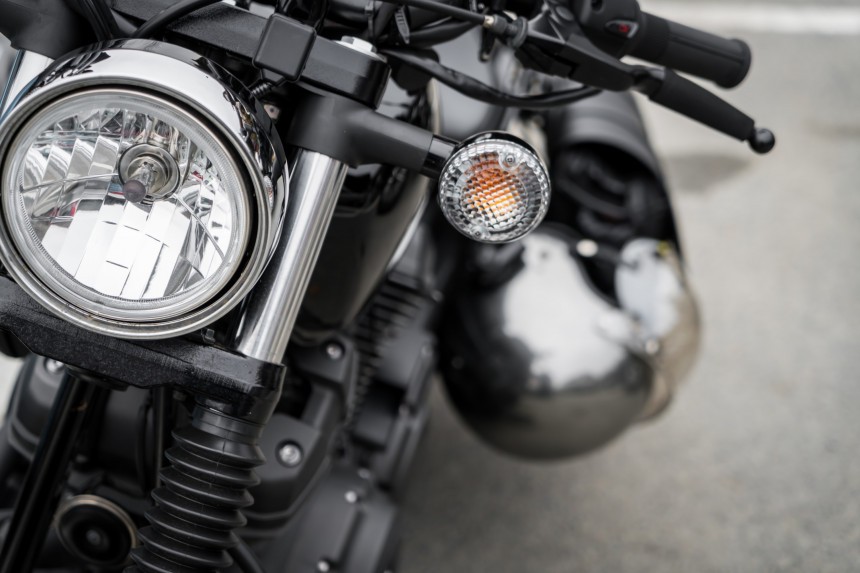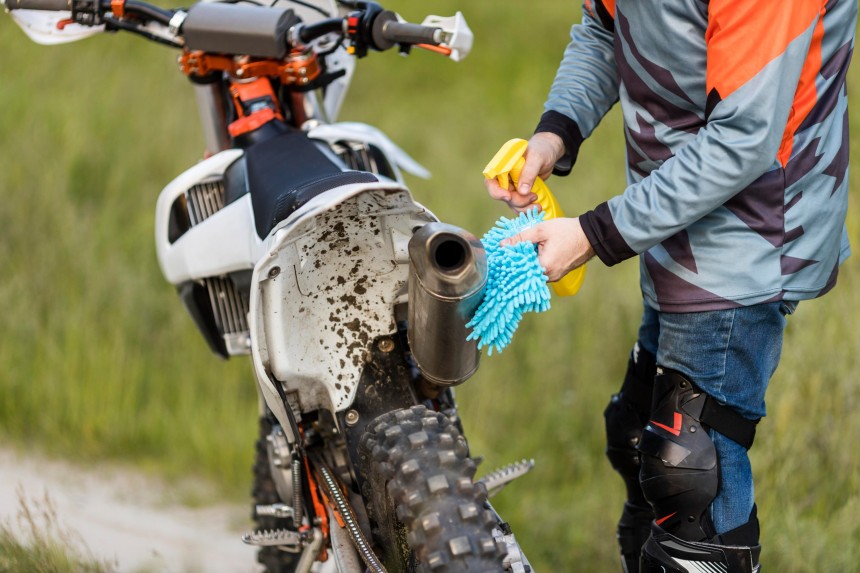Maintenance for motorcycles is much simpler than maintenance for cars. Still, having a clear checklist to follow is helpful to ensure your bike is in tip-top shape. That's what I'll discuss today: all the boxes you must tick to be able ride away into the sunset and not be stuck at home with a broken bike.
Motorcycle maintenance is critical for several reasons. It's about preventing damage and higher costs and about making sure you're safe on the road.
Whether you're looking to buy your first bike and become familiar with what maintenance is about, or you're a seasoned rider who wants to double-check whether you've skipped any steps, this guide has got you covered. If you're part of the former category, you'll be happy to know that motorcycle maintenance isn't rocket science. As mentioned above, keeping your two-wheelers well-maintained is much simpler than cars.
You should always ensure that your bike is well-maintained. However, there are some moments, like when spring just started and you're taking your bike out of the garage when it's critical you check your machine first before you hit the road.
One typically asked question is, "When should I service my motorcycle?" Well, it depends on how hard and often you ride your bike. As a rule of thumb, you'll need to change your oil every six months or 5,000 to 6,000 miles (8,000 to 9,600 km). But ideally, you'll need to check it regularly to make sure everything works smoothly. There are many other things besides the oil that require attention.
It all depends on how long the bike has sat unused. If it's been a matter of weeks, you probably won't have any problems. However, if you've refueled with ethanol-blended fuel, it might go bad in a matter of weeks, depending on how it's stored. If not, the fuel could last for up to 6 to 8 months. However, it's typically not worth taking the risk. The best solution would be to empty the tank and fill it with some fresh dinosaur juice.
Using a battery tester to see how much power it's outputting would be best. However, even without special tools, you can still analyze the battery's condition by checking its age and how easily it cranks your engine over. You should consider replacing it if it's more than five years old. You don't want it to bite the dust mid-ride and force you to tow your bike.
While you're checking the battery, open the fuse box to inspect the fuses. Always bring some spares with you – you never know when a fuse might blow.
Second, check to see whether the tires have enough tread. You can do that either visually, but the best way to do it is with a tread depth gauge. Many tires will have a wear indicator strip at 1/32" from the boot that lets you know the tread is too worn to ride on – that's the point where most tire manufacturers recommend replacement.
A tire with little tread will not offer sufficient traction. In the best scenario, this will lead to your tire slipping often, but in the worst, it can lead to an accident.
How about age? While it should be considered, it's not the most important factor in determining whether a tire is roadworthy or not. Tire manufacturers consider five years to be the "sell by" date, with many years of service anticipated past that point. So, if you get new tires that are two years old, they have their whole life ahead of them.
Still, you can consider the manufacture date when examining the rubber for cracks, dry rot, and excessive hardening from oxidation. Also, make sure balancing weights haven't fallen off the bike and that your wheel bearings are okay by checking for excessive play in the tires and whether they roll smoothly. Of course, you'll need to lift your bike to do that.
Then, it's critical to keep your chain well-tensioned to ensure your bike runs smoothly and to prevent excessive wear and power loss. While you're at it, you should check the wear of the sprockets, especially the front one, which is usually hidden. Also, make sure the front sprocket nut is tight.
First, is there any scoring, glazing, or deforming of the rotors? Scoring happens when the brake pads are worn down significantly and the underlying metal scrapes against the rotor during deceleration. It can also occur when the brake pad has a manufacturing defect, such as cracks, bubbles, or hard spots, making it uneven.
Glazing happens when temperatures exceed the brake pad limits, and the pad materials harden and create a smooth, glassy surface. If your brakes are glazed, they can't provide the necessary friction with the rotors to slow you down. Moreover, rust is okay as long as it's just on the surface. It typically appears after the bike has been sitting and will go away when you use the brakes.
Of course, you have to check how much meat you have left on the pads and whether they are wearing evenly. Check with the service manual to see if the brake pads are still okay to use based on how much depth is left.
Other commonly neglected things are the brake lines and the brake fluid. Make sure the lines are still good, and check your manual for a replacement interval for the fluid. If you ride hard, you should replace it every other season.
Don't forget about the other fluids on your motorcycle. You should change coolant every other season, although it's best to check with your manual to ensure you adhere to the manufacturer's recommendations. Furthermore, make sure your transmission oil is fresh enough (if this applies to your motorcycle) along with the fork oil, which is generally changed every one to two years, and the hydraulic clutch fluid.
Oil strainers also require cleaning, usually every 2-3 oil changes. A strainer is designed to catch larger particulates. You can clean it using degreaser or brake cleaner. Then, wash it with water, and let it fully dry before you fit it back on the bike.
Another important component is the air filter. Depending on usage and the manufacturer's recommended interval, it must be replaced every 3,000 to 6,000 miles (5,000 to 10,000 km).
As soon as you notice your fork starts to leak oil, you'll need to replace the fork seals. When you do that, you'll also need to replace the oil.
If you see any lights dimming and flickering, it might be time to replace the bulbs before they have a chance to burn out completely. Or, it might be that a fuse has blown. What's more, check the switches controlling all the electronics on your bike and replace them if necessary.
If you have a sticky throttle or hard clutch pull, try to lubricate them away or adjust them. If that doesn't work, inspect for interference on the lever or throttle tube. Replace the cables if they are worn. Moreover, make sure to look over the foot and hand levers to make sure nothing's loose.
You should also check if the steering is good. If possible, lift the front wheel off the ground. Then, turn the bar from side to side - there should be no sticking, resistance, or noise. Next, grab the fork bottom and wiggle front to back - there should be no play.
Bonus: Cleanliness
To ensure your bike is in tip-top shape, you must clean it once in a while. Long story short, a clean motorcycle lasts longer and rides better. By washing it regularly, you decrease the likelihood of mechanical failures. I won't get into the exact steps involved in cleaning your motorcycle. If you're interested in that, check out an article I updated recently that covers this topic.
And there you have it. This maintenance checklist might seem a bit tedious to do, but trust me, it's worth it in the long run, at least if you want your bike to operate efficiently and safely.
Of course, you don't need to check all this each time you ride. Instead, you can use the Motorcycle Safety Foundation's T-CLOCS pre-ride motorcycle inspection system. Here's what the acronym stands for:
It might take a bit more time to do this every time you ride your motorcycle, but the sooner you get it in your riding routine, the better. If your bike could talk, it would definitely thank you.
After all is said and done, make sure you enjoy the ride. That's why we invest so much money, time, and effort into maintaining our bikes, right? If you feel anything else should be part of the maintenance checklist, please share it with us in the comment section below.
Whether you're looking to buy your first bike and become familiar with what maintenance is about, or you're a seasoned rider who wants to double-check whether you've skipped any steps, this guide has got you covered. If you're part of the former category, you'll be happy to know that motorcycle maintenance isn't rocket science. As mentioned above, keeping your two-wheelers well-maintained is much simpler than cars.
You should always ensure that your bike is well-maintained. However, there are some moments, like when spring just started and you're taking your bike out of the garage when it's critical you check your machine first before you hit the road.
One typically asked question is, "When should I service my motorcycle?" Well, it depends on how hard and often you ride your bike. As a rule of thumb, you'll need to change your oil every six months or 5,000 to 6,000 miles (8,000 to 9,600 km). But ideally, you'll need to check it regularly to make sure everything works smoothly. There are many other things besides the oil that require attention.
1. Fuel
You can skip this step if you've been riding your bike regularly and recently refueled. However, if you've parked your motorcycle for a longer time, you might need to replace the fuel inside the tank.It all depends on how long the bike has sat unused. If it's been a matter of weeks, you probably won't have any problems. However, if you've refueled with ethanol-blended fuel, it might go bad in a matter of weeks, depending on how it's stored. If not, the fuel could last for up to 6 to 8 months. However, it's typically not worth taking the risk. The best solution would be to empty the tank and fill it with some fresh dinosaur juice.
2. Battery
Ideally, you'll want to keep your battery on a maintenance charger when you don't ride for longer periods. If you haven't done so, connect one now. If the battery charges fully, you're probably in the clear.Using a battery tester to see how much power it's outputting would be best. However, even without special tools, you can still analyze the battery's condition by checking its age and how easily it cranks your engine over. You should consider replacing it if it's more than five years old. You don't want it to bite the dust mid-ride and force you to tow your bike.
While you're checking the battery, open the fuse box to inspect the fuses. Always bring some spares with you – you never know when a fuse might blow.
3. Tires and Wheels
Tires deserve your time and attention because they're one of the most important parts of any vehicle. There are several things you can check. First, ensure the air pressure is safe for riding – you'll usually find the manufacturer's recommended tire pressure on the side wall. Do so at least once a week.Second, check to see whether the tires have enough tread. You can do that either visually, but the best way to do it is with a tread depth gauge. Many tires will have a wear indicator strip at 1/32" from the boot that lets you know the tread is too worn to ride on – that's the point where most tire manufacturers recommend replacement.
A tire with little tread will not offer sufficient traction. In the best scenario, this will lead to your tire slipping often, but in the worst, it can lead to an accident.
How about age? While it should be considered, it's not the most important factor in determining whether a tire is roadworthy or not. Tire manufacturers consider five years to be the "sell by" date, with many years of service anticipated past that point. So, if you get new tires that are two years old, they have their whole life ahead of them.
Still, you can consider the manufacture date when examining the rubber for cracks, dry rot, and excessive hardening from oxidation. Also, make sure balancing weights haven't fallen off the bike and that your wheel bearings are okay by checking for excessive play in the tires and whether they roll smoothly. Of course, you'll need to lift your bike to do that.
4. Chain
There are things you can do to ensure your chain will perform as best as possible. Cleaning is an important part of chain maintenance: dirt and grime build up on it, so it's best to clean it regularly. Make sure to lubricate it after.Then, it's critical to keep your chain well-tensioned to ensure your bike runs smoothly and to prevent excessive wear and power loss. While you're at it, you should check the wear of the sprockets, especially the front one, which is usually hidden. Also, make sure the front sprocket nut is tight.
5. Brakes
Nobody wants to experience brake failure or any other brake-related issues. Luckily, checking your brakes isn't a challenging task. It's easier to check them when the bike is off the ground. There are several things you should look for.First, is there any scoring, glazing, or deforming of the rotors? Scoring happens when the brake pads are worn down significantly and the underlying metal scrapes against the rotor during deceleration. It can also occur when the brake pad has a manufacturing defect, such as cracks, bubbles, or hard spots, making it uneven.
Glazing happens when temperatures exceed the brake pad limits, and the pad materials harden and create a smooth, glassy surface. If your brakes are glazed, they can't provide the necessary friction with the rotors to slow you down. Moreover, rust is okay as long as it's just on the surface. It typically appears after the bike has been sitting and will go away when you use the brakes.
Of course, you have to check how much meat you have left on the pads and whether they are wearing evenly. Check with the service manual to see if the brake pads are still okay to use based on how much depth is left.
Other commonly neglected things are the brake lines and the brake fluid. Make sure the lines are still good, and check your manual for a replacement interval for the fluid. If you ride hard, you should replace it every other season.
6. Oil and Other Fluids
When we think of motorcycle fluids, the first one that comes to most peoples' minds is oil. Even if you haven't reached your recommended mileage interval, changing the oil and filter a bit early never hurts. What's more, take into account the age of the oil. If you don't ride many miles on your bike, changing the oil at least once a season is a good practice. Also, it's the same with oil as with brakes – if you ride hard, you'll have to change it more often.Don't forget about the other fluids on your motorcycle. You should change coolant every other season, although it's best to check with your manual to ensure you adhere to the manufacturer's recommendations. Furthermore, make sure your transmission oil is fresh enough (if this applies to your motorcycle) along with the fork oil, which is generally changed every one to two years, and the hydraulic clutch fluid.
7. Filters
When you change the oil, you must also change the oil filter. Be wary of fake oil filters available on the market - you should always purchase the type of filter recommended by your owner's manual.Oil strainers also require cleaning, usually every 2-3 oil changes. A strainer is designed to catch larger particulates. You can clean it using degreaser or brake cleaner. Then, wash it with water, and let it fully dry before you fit it back on the bike.
Another important component is the air filter. Depending on usage and the manufacturer's recommended interval, it must be replaced every 3,000 to 6,000 miles (5,000 to 10,000 km).
8. Suspension
Generally, only two items on the front fork will need regular replacements: the fork oil and the fork seals. The fork oil usually needs to be replaced after 12,000 to 18,000 miles (20,000 to 30,000 km), depending on the recommendation of the owner's manual.As soon as you notice your fork starts to leak oil, you'll need to replace the fork seals. When you do that, you'll also need to replace the oil.
9. Lights and Electronics
One of the simplest maintenance tasks is checking your lights and indicators. You can usually notice if your front turn signals aren't working, but check the brake light and the rear stop lights once in a while to make sure they work as they should. The same goes for the headlight.If you see any lights dimming and flickering, it might be time to replace the bulbs before they have a chance to burn out completely. Or, it might be that a fuse has blown. What's more, check the switches controlling all the electronics on your bike and replace them if necessary.
10. Cables, Controls, and Steering
Oil and grease in the cable housing can dry up in the long run, thus affecting the performance of your clutch and throttle. So, it's important to check the clutch, brake, throttle, choke, and any other cables and lines to make sure they operate properly.If you have a sticky throttle or hard clutch pull, try to lubricate them away or adjust them. If that doesn't work, inspect for interference on the lever or throttle tube. Replace the cables if they are worn. Moreover, make sure to look over the foot and hand levers to make sure nothing's loose.
You should also check if the steering is good. If possible, lift the front wheel off the ground. Then, turn the bar from side to side - there should be no sticking, resistance, or noise. Next, grab the fork bottom and wiggle front to back - there should be no play.
Bonus: Cleanliness
To ensure your bike is in tip-top shape, you must clean it once in a while. Long story short, a clean motorcycle lasts longer and rides better. By washing it regularly, you decrease the likelihood of mechanical failures. I won't get into the exact steps involved in cleaning your motorcycle. If you're interested in that, check out an article I updated recently that covers this topic.
Final Check
Before you hop on the motorcycle, run back through all the components you changed, cleaned, or modified in any way to make sure everything is tightened properly. What's more, hit all the critical fasteners, such as the motor mounts, axle bolt and adjusters. Do a walk-around and check everything.And there you have it. This maintenance checklist might seem a bit tedious to do, but trust me, it's worth it in the long run, at least if you want your bike to operate efficiently and safely.
Of course, you don't need to check all this each time you ride. Instead, you can use the Motorcycle Safety Foundation's T-CLOCS pre-ride motorcycle inspection system. Here's what the acronym stands for:
- T – Tires and Wheels
- C – Controls
- L – Lights and Electronics
- O – Oil and Other Fluids
- C – Chassis
- S – Stands
It might take a bit more time to do this every time you ride your motorcycle, but the sooner you get it in your riding routine, the better. If your bike could talk, it would definitely thank you.
After all is said and done, make sure you enjoy the ride. That's why we invest so much money, time, and effort into maintaining our bikes, right? If you feel anything else should be part of the maintenance checklist, please share it with us in the comment section below.
